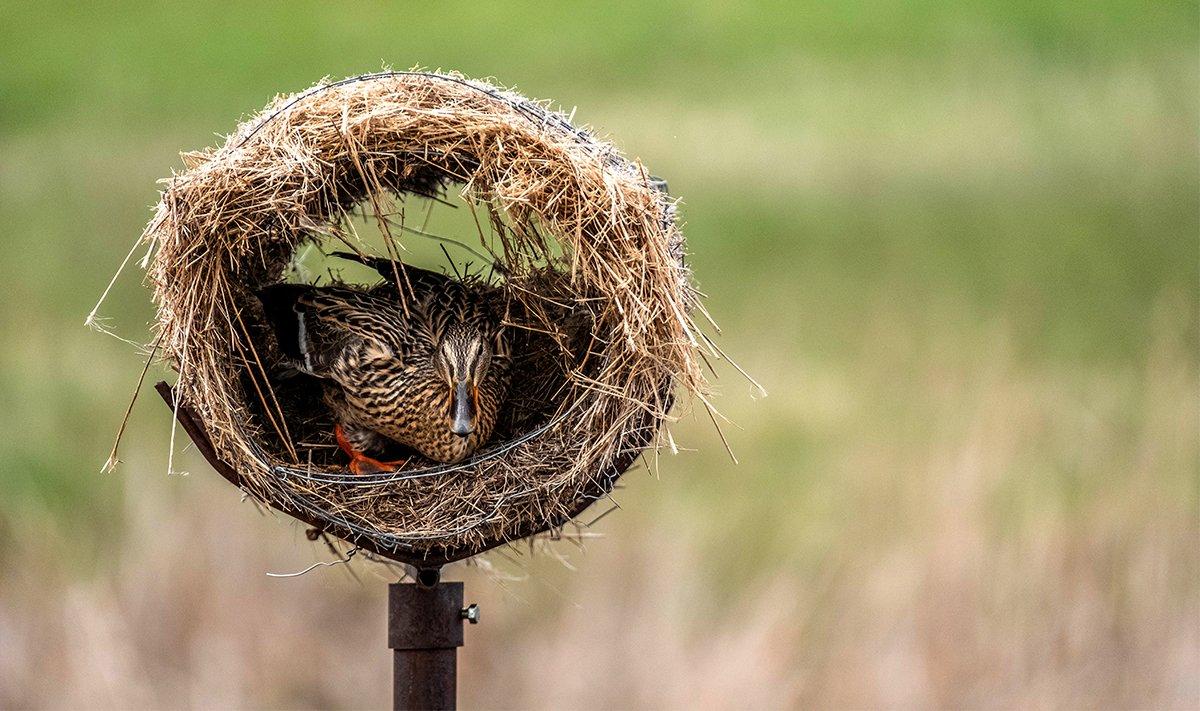Conservation effort looks to have 10,000 hen houses on the nesting grounds by 2022
Nesting mallards have it tough, but Delta Waterfowl's hen house program has been making their lives easier and boosting production for decades. In fact, by 2022, the group will have almost 10,000 hen houses available for ducks, which could produce about 45,000 ducklings.
When you look at the landscapes where ducks typically nest, they've been altered quite a bit over the last couple of centuries, says Matt Chouinard, senior waterfowl programs and Delta Marsh property manager for Delta Waterfowl. They're still returning to those areas, but their success at nesting isn't as high as we'd like, so in those areas with lots of wetlands, those hen houses are great tools to give mallards an opportunity to nest in a place that would otherwise offer little opportunity for success.
Hen houses are cylindrical nesting structures elevated on poles at selected wetlands. Refined through years of research by Delta, the houses provide attractive nest sites that keep nesting mallard hens and eggs out of the reach of predators. Research indicates hen houses consistently boost nesting success to more than 60 percent and commonly 80 percent in areas where ground-nesting mallards typically achieve nest success of less than 10 percent. Many biologists agree that 15 percent nesting success is the break-even mark for sustaining the population.
Their location above the water excludes a suite of predators, Chouinard says. Mammalian predators are the No. 1 cause of nest failures for ducks, including skunks, foxes, coyotes and badgers — and even ground squirrels will eat a duck egg. If you put a hen house over water, those predators aren't going to find them.
Delta maintains hen houses across the critical breeding areas of Manitoba, Saskatchewan, Alberta, North Dakota, Minnesota and Ontario. Many are placed in efficiently designed super sites, which are clusters of 100 or more hen houses installed in relatively small geographic areas with extremely high breeding mallard densities. Clustering the houses increases production at those critical spots and reduces associated labor and fuel costs.
Chouinard says Delta has studied hen houses since 1991 but really started expanding its program in 2008. Currently, the organization has about 9,000 hen houses and should top 10,000 by next year.
In terms of ducklings that hatch, our estimates say it averages somewhere between four to four and a half ducklings hatching per hen house per year, he says. If you put that in 10,000 hen houses, that's quite a few ducklings hatching per year.
Delta's hen houses are placed and maintained by contracted delivery specialists, and Chouinard says the latter consideration is critical.
If hen houses aren't maintained annually, their condition deteriorates, and they're not productive, he says. Hens won't use them, and they just become an eyesore. We want to make sure they're in great shape every year.
In addition, Delta volunteers manage and maintain more than 5,000 houses, further boosting production and adding more mallards to the fall flight.
Click here for more Realtree waterfowl hunting content. And check us out on Facebook.







